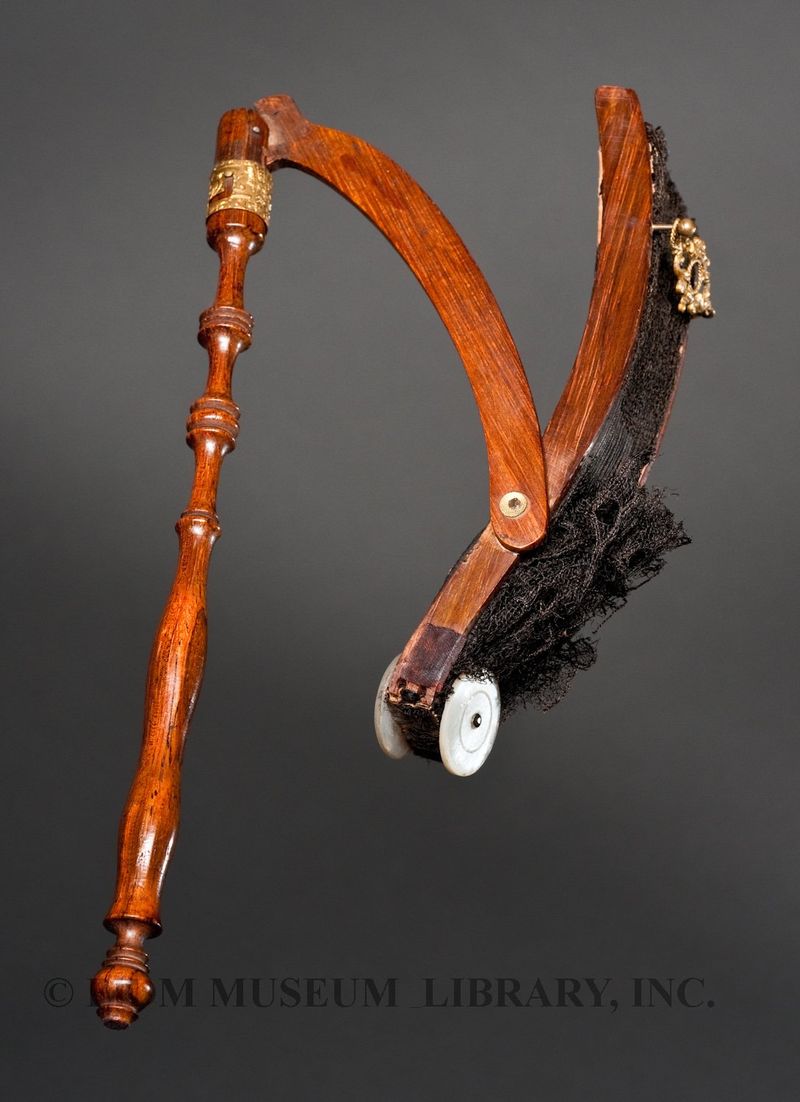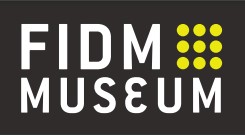One of our goals in starting this blog was to reveal the aspects of museum life that are usually out of public view. With that in mind, we've brought you posts on exhibition design, mount making, creating paper wigs, and behind-the-scenes research projects. Today, we're thrilled to feature an interview with FIDM Museum photographer, Brian Sanderson. Many of the object photographs seen on our blog, and all photos seen in FIDM Museum publications, are taken by Brian. His photos bring our objects to life, highlighting their most compelling visual qualities. Keep reading to find out what interested Brian about working with our collection, and which objects are most difficult to photograph.
**********
How long have you been working with the FIDM Museum?
About 5 years, though I’ve been photographing for FIDM Publications for about 15 years.
Did you have a background or interest in fashion or fashion history before you started working with the FIDM Museum?
No. In fact, originally my interest in photography really came from the fine art realm. I loved the work of Robert Rauschenberg, Cindy Sherman, John Baldessari, and Francesca Woodman. In the 80s I started shooting my own images in order to incorporate them into conceptually based prints and drawings. In the late 90s I started exploring more documentary-type photography, and in mid-2000 I ventured into digital photography and fashion studio work. When I approached Kevin about photographing for the museum I was intrigued about having the opportunity to explore light on three-dimensional forms.
And how is working with static objects different from the other types of photography that you’ve explored?
I am part of a creative team that can make immediate decisions to change how the camera will capture its subject. We can be precise and exacting. There’s no living subject to move or tire; no light starting to disappear. That level of control is very freeing.
How does control free up the creative process?
To start, Kevin and Christina position the object to be photographed. Kevin usually weaves a fanciful, historically based story for me about who wore the outfit and the setting in which the person lived. Next, I ask Kevin and Christina what is important about the outfit. Is it the silhouette? The detail? The construction? A certain feature(s)? Once I hear the story and know what is important about the outfit, then the fun starts. I try to pre-visualize what quality light is needed to capture both the mood and the object. I set the lights; take a few shots; preview them on the camera; readjust the lights. At this point everything is about trying to capture what I have pre-visualized will be the best solution.
I must admit, I’m very private about this creative activity. This is my creative time. I don’t even let Kevin and Christina preview these early shots. Once I feel that I’ve captured what I intended, I transfer the images to a computer and the three of us review them. At this point the images become the basis of our conversation. The images are scrutinized down to the minutest detail. Sometimes adjustments are made accordingly: lights are moved slightly/pinpointed more exactly, the underneath padding is fluffed and/or the position of the object itself is tweaked a bit. It’s during those discussions that I truly feel a part of a highly creative team. It’s a very personally rewarding process.
When we photographed this Vionnet evening gown for the FABULOUS! catalogue, Kevin spun a tale about a chic evening party on the Upper West Side. We photographed the mannequin from several angles to capture the glamour of the gown. In the view below, she's standing on an outside terrace, poised to turn and reenter the party.
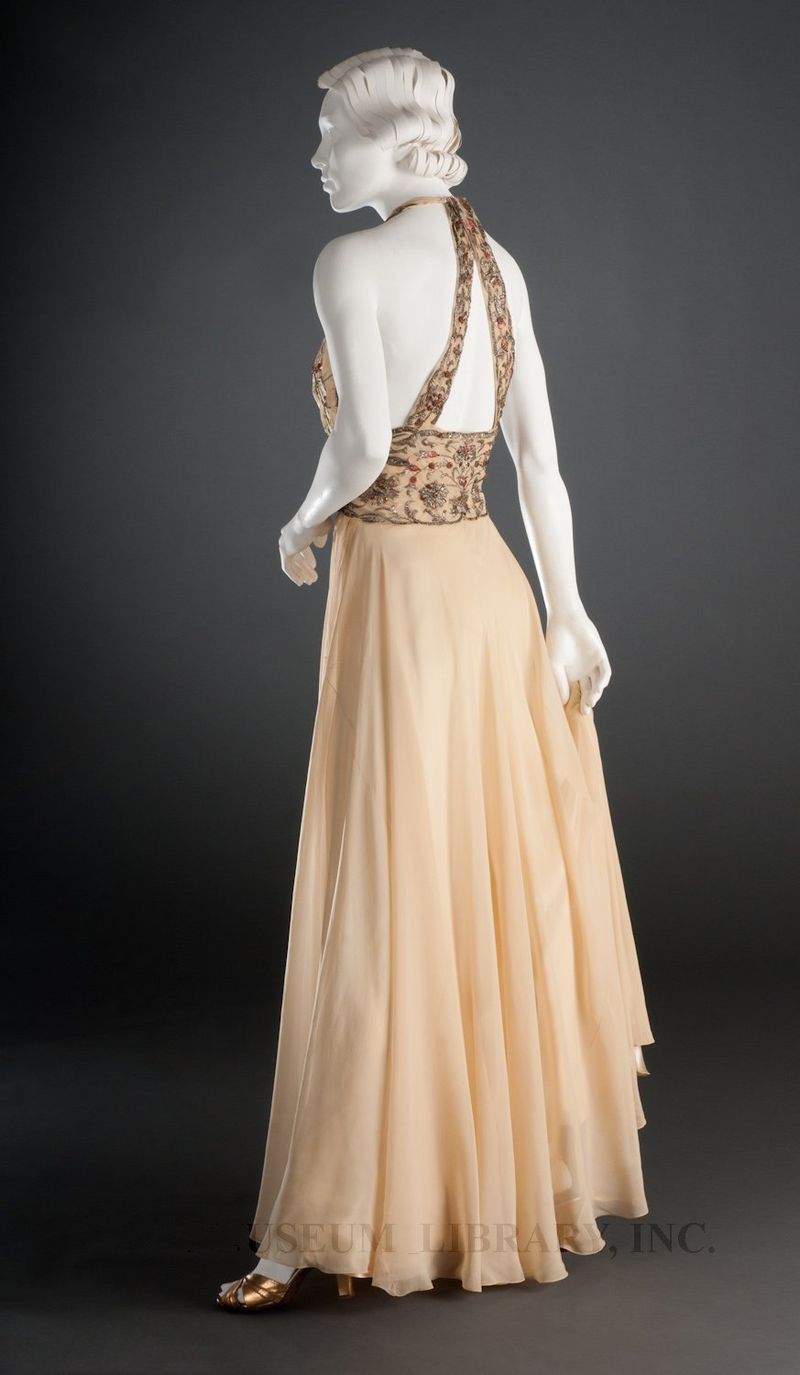 Evening gown
Evening gown
Madeleine Vionnet
c. 1936-1938
Museum Purchase, Funds provided by Mrs. Tonian Hohberg
2008.5.50AB
What are the most difficult objects to capture in photos?
Sheer fabrics. With sheer fabric, especially fabric that has texture and pattern, it’s easy to lose the sheer quality of the fabric while trying to retain the 3 dimensional structure of the form. Too much front lighting causes the fabric to go opaque and solid; too much back lighting and the sense of dimension and form becomes lost. However, because Kevin is a master at hanging objects with monofilament and Carolyn, our Mount Maker, a master at constructing highly engineered invisible mounts, my life is made easier in capturing all of the elements of sheer fabric.
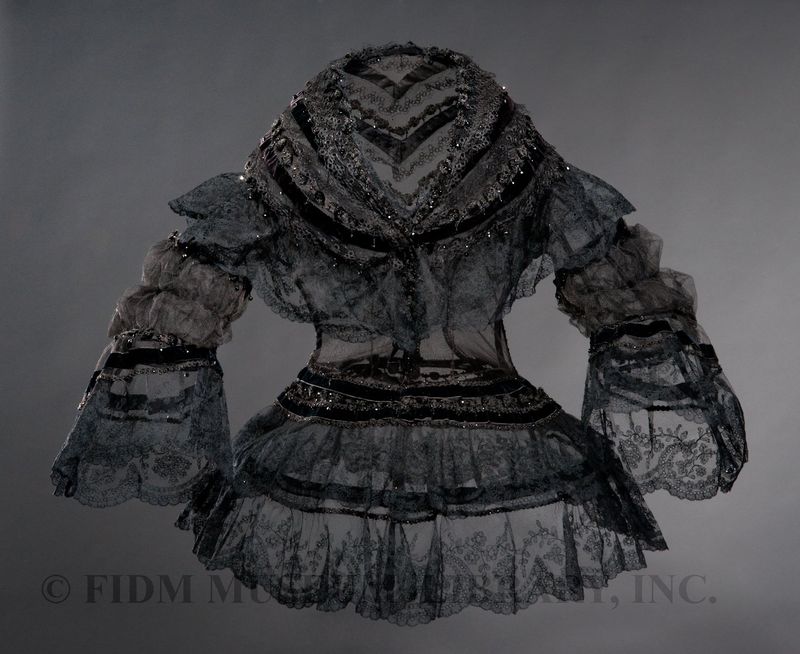 Canezou
Canezou
c. 1855
Museum Purchase, Funds provided by Tonian Hohberg
2008.5.44
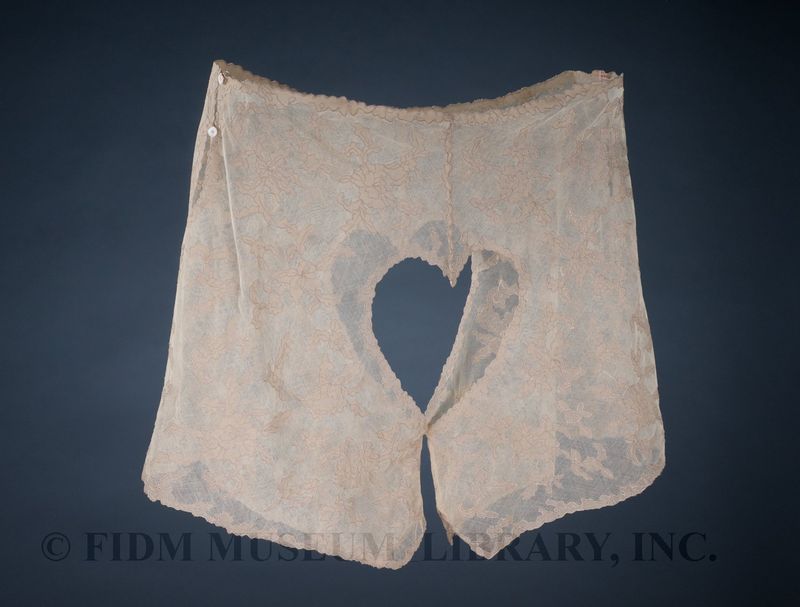 Panties
Panties
1925-35
Museum Purchase
2004.5.79
Do you have a favorite object that you’ve photographed in the collection?
That’s a difficult question. Some I like simply because of the color, or the details, or the shape. But, if I must choose I would say the Fan-Parasol. For me, everything comes together in that one piece: design, functionality, precision, ingenuity, attention to detail, elegance, and impeccable craftsmanship. Depending on how it's folded, it's a fan, a parasol, or a compact object easily tucked inside a purse.
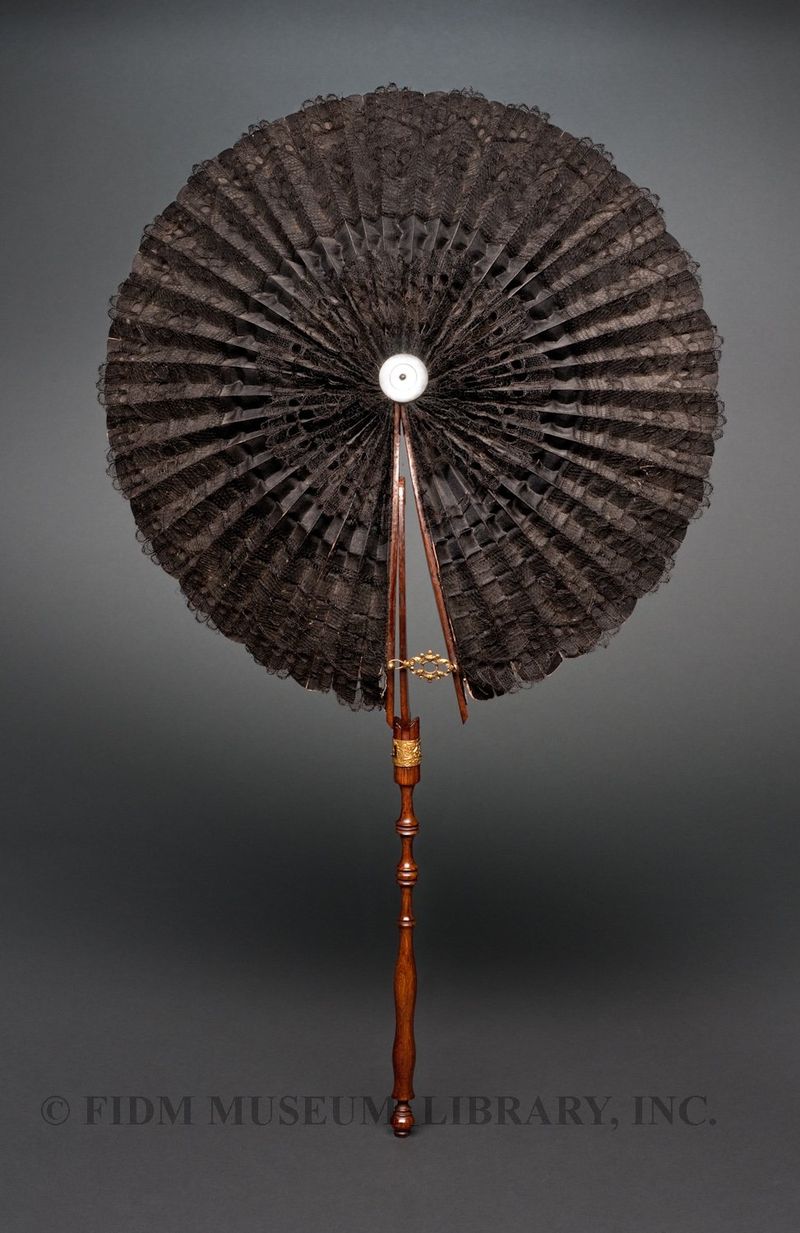 Fan-Parasol (upright fan)
Fan-Parasol (upright fan)
c. 1854
Museum Purchase
2007.5.4
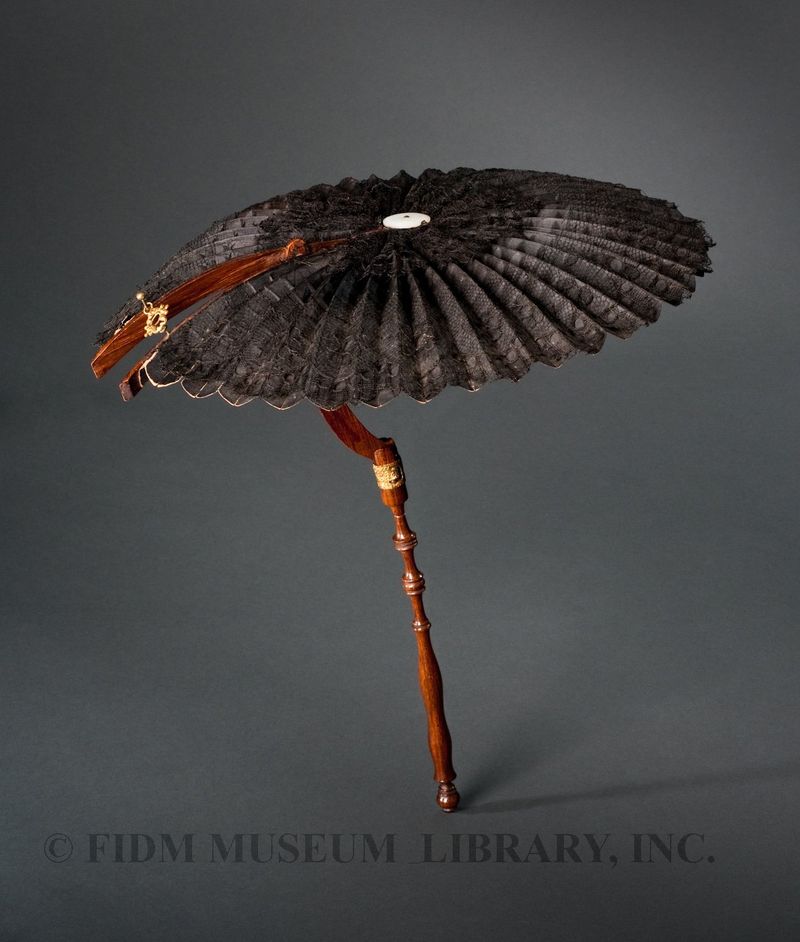 Fan-Parasol (with lace cockade tilted)
Fan-Parasol (with lace cockade tilted)
This brings me to my last question. How has your perspective on fashion and fashion history changed since photographing for the FIDM Museum?
I must admit before working with Kevin and Christina I identified with the Anne Hathaway character in The Devil Wears Prada. Even though I worked at a fashion college, I grew up in the era of blue jeans and protest t-shirts. Until a few years ago, I hadn’t moved much past that stage, just ask my teenage daughter. Since photographing for the museum I have come to understand fashion as a reflection of, and a response to, dynamic changes in society. I now realize that fashion has personal, communal, and global implications. The flip side is it makes choosing an outfit each morning much tougher.

